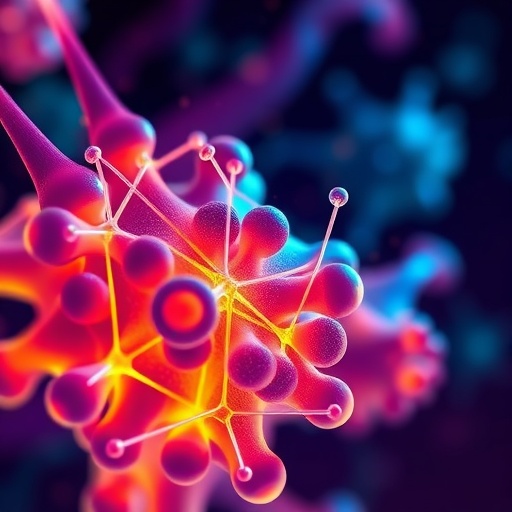Spatial metabolomics is revolutionizing our understanding of the intricate metabolic landscapes embedded within living organisms. Traditionally, metabolomics relied heavily on the analysis of biological fluids such as blood or urine, providing an aggregate picture of metabolic states. However, these methods lacked the spatial context crucial for deciphering the dynamic interactions occurring at the cellular and tissue levels. Spatial metabolomics bridges this critical gap by integrating advanced imaging technologies with metabolomics, enabling researchers to pinpoint the exact location of metabolites within biological specimens. This leap from bulk profiling to spatially resolved metabolite mapping offers unprecedented clarity in tracing the distribution, interaction, and transformation of compounds as they exert their biological effects.
One of the most transformative applications of spatial metabolomics lies in the realm of food-medicine homology, a principle deeply rooted in traditional Chinese medicine (TCM). Food-medicine homology refers to the dual role that certain natural substances play as both nourishing foods and therapeutic agents. These substances are complex matrices containing myriad bioactive compounds whose synergistic actions underpin their health benefits. Despite their widespread use, the mechanistic underpinnings of how these multi-component systems operate in vivo have remained enigmatic, partly due to the inherent complexity of their absorption, distribution, metabolism, and excretion (ADME) processes. Spatial metabolomics now offers a powerful tool to elucidate these mechanisms by mapping the precise location and temporal evolution of these compounds and their metabolites within tissues.
At the heart of this field lie three primary challenges that have historically impeded progress. The first is the so-called “black box” of component interactions, which refers to the difficulty in deciphering the in situ interactions of individual bioactive molecules within the complex milieu of biological tissues. Traditional metabolomic approaches provide snapshots of metabolites present but fail to reveal their exact sites of action or their localized concentrations within organs or cellular compartments. The second challenge pertains to poorly characterized spatiotemporal dynamics. Bioactive compounds from medicinal and dietary sources often exhibit efficacy that is dependent not only on their presence but also on their timing and location within the body. Conventional assays lack the resolution to monitor these dynamics over multiple time points and spatial scales. The third challenge involves the triadic relationship among environment, substance, and organism. Environmental factors, such as altitude and climate, affect the biosynthesis of unique metabolites in plants, which in turn influence human health after consumption. Decoding this environment-substance-organism axis requires integrative spatial metabolic profiling capable of capturing these complex interactions.
Spatial metabolomics confronts these challenges by deploying high-resolution in situ imaging modalities, principally mass spectrometry imaging (MSI), to visualize and quantify metabolites across biological structures. MSI combines the sensitivity of mass spectrometry with spatial resolution that can approach the cellular level, allowing researchers to create comprehensive maps of metabolites across tissues. When applied to the study of food-medicine homology, MSI enables the tracing of bioactive compounds from absorption sites in the gut through absorption, distribution into target organs, and eventual metabolic transformation. This “component-absorption site-target organ” pathway elucidation is critical for understanding how complex mixtures translate into measurable physiological outcomes.
Moreover, the integration of artificial intelligence (AI) with spatial metabolomics is catalyzing novel insights into the intricate regulatory networks underlying bioactivity. AI-driven multidimensional data mining facilitates the extraction of patterns and relationships between spatial metabolite distributions and biological effects, leading to the construction of quantitative structure-activity relationships (QSAR). This data-driven paradigm shifts formula design in medicinal foods from traditional empirical methods to precision-guided strategies, enhancing reproducibility and efficacy.
Spatial metabolomics also opens new horizons in the understanding of intestinal microenvironments, which are central to the metabolism of dietary and medicinal compounds. The gut is a complex ecosystem where microbial communities, host cells, and exogenous substances constantly interact. By coupling MSI with laser capture microdissection, scientists can perform spatially resolved metabolomic analyses of specific gut microdomains, such as crypts or Peyer’s patches. These investigations reveal metabolite fluxes and metabolic crosstalk within distinct intestinal niches, providing direct evidence of the tripartite dialogue among components, microbiota, and host that modulates health.
In the context of geo-authenticity—a concept that links the therapeutic efficacy of herbal medicines to their geographic origin—spatial metabolomics offers a potent analytical approach. By mapping how environmental variables impact the spatial distribution of metabolites within medicinal plants, researchers can identify chemical markers signature to specific growth conditions. This integrative model correlates environmental factors, component spatial patterns, and efficacy intensities, providing robust, objective benchmarks for product authentication and quality control.
While the promise of spatial metabolomics is vast, its industrial-scale application within the medicinal and dietary sectors is still emerging, hindered by technical and economic constraints. High per-sample analysis costs, often ranging from $3,000 to $5,000, constrain throughput and widespread adoption. Additionally, matrix effects unique to plant tissues can compromise imaging accuracy, complicating interpretation. Furthermore, the lack of standardized protocols for integrating spatial metabolomic data with other omics layers, such as genomics and proteomics, presents a barrier to comprehensive multi-dimensional analyses.
To overcome these obstacles, innovative solutions are underway. The development of specialized sample preparation protocols tailored for plant tissues, including biodegradable matrix coatings, enhances imaging fidelity. Concurrently, the advancement and commercialization of domestically produced, high-resolution MSI instrumentation promise to reduce costs significantly. The establishment of dedicated spatial metabolome databases focusing on medicinal and dietary compounds will facilitate data sharing and comparative analyses across studies. Additionally, emerging technical standards and workflow guidelines are poised to harmonize data acquisition and analytical pipelines, bolstering reproducibility and scalability.
Looking forward, spatial metabolomics is expected to drive three major breakthroughs in medicinal and dietary research. First is the construction of the inaugural human spatial metabolome atlas specific to medicinal and edient components, serving as a comprehensive reference for tissue-specific metabolite distributions. Second, spatial metabolic profiling will underpin personalized dietary recommendations tailored to individuals’ unique metabolic landscapes, optimizing health outcomes. Third, environment-responsive smart cultivation technologies will enable the targeted enhancement of bioactive compound accumulation in crops, aligning agricultural practices with therapeutic goals.
These advances resonate strongly with national initiatives such as China’s “Healthy China 2030” strategy, which prioritizes the modernization and internationalization of traditional medicine. Spatial metabolomics provides the technological foundation to transition medicinal and dietary research from traditional heuristics to precision science, maximizing the efficacy of food-derived therapeutics. It also positions the medicinal and edient industry to assume leadership in the global health innovation landscape by enabling objective quality control, elucidating active constituents, and facilitating personalized interventions.
Driven by synergistic developments in AI-assisted image recognition, ultra-sensitive molecular probes, and real-time metabolic flux analyses, spatial metabolomics heralds a new era in which the ancient wisdom of food and medicine homology is redefined through the lens of high-resolution molecular cartography. This transformative technology not only deepens biological understanding but also inspires novel strategies to improve human health through targeted nutrition and evidence-based herbal therapies.
Subject of Research: Spatial metabolomics and its application in food-medicine homology research
Article Title: Refining the gut-microbiome axis: A triad of metabolites, targeted microbial delivery, and AI-assisted profiling for precision medicine-food intervention
News Publication Date: 23-Jun-2025
Web References: http://dx.doi.org/10.26599/FMH.2025.9420118
Image Credits: Food & Medicine Homology, Tsinghua University Press
Keywords: Spatial metabolomics, food-medicine homology, mass spectrometry imaging, gut microbiome, AI-assisted profiling, medicinal plants, bioactive compounds, metabolite mapping, geo-authenticity, traditional Chinese medicine, precision nutrition
Tags: bioactive compounds in healthcellular metabolic interactionscomplex matrices in nutritiondynamic metabolite distributionfood-medicine homology applicationsimaging technologies in metabolomicsin vivo metabolic processesmetabolite mapping techniquesrevolutionizing metabolomics researchspatial metabolomics in food researchtherapeutic agents in natural substancestraditional Chinese medicine insights





